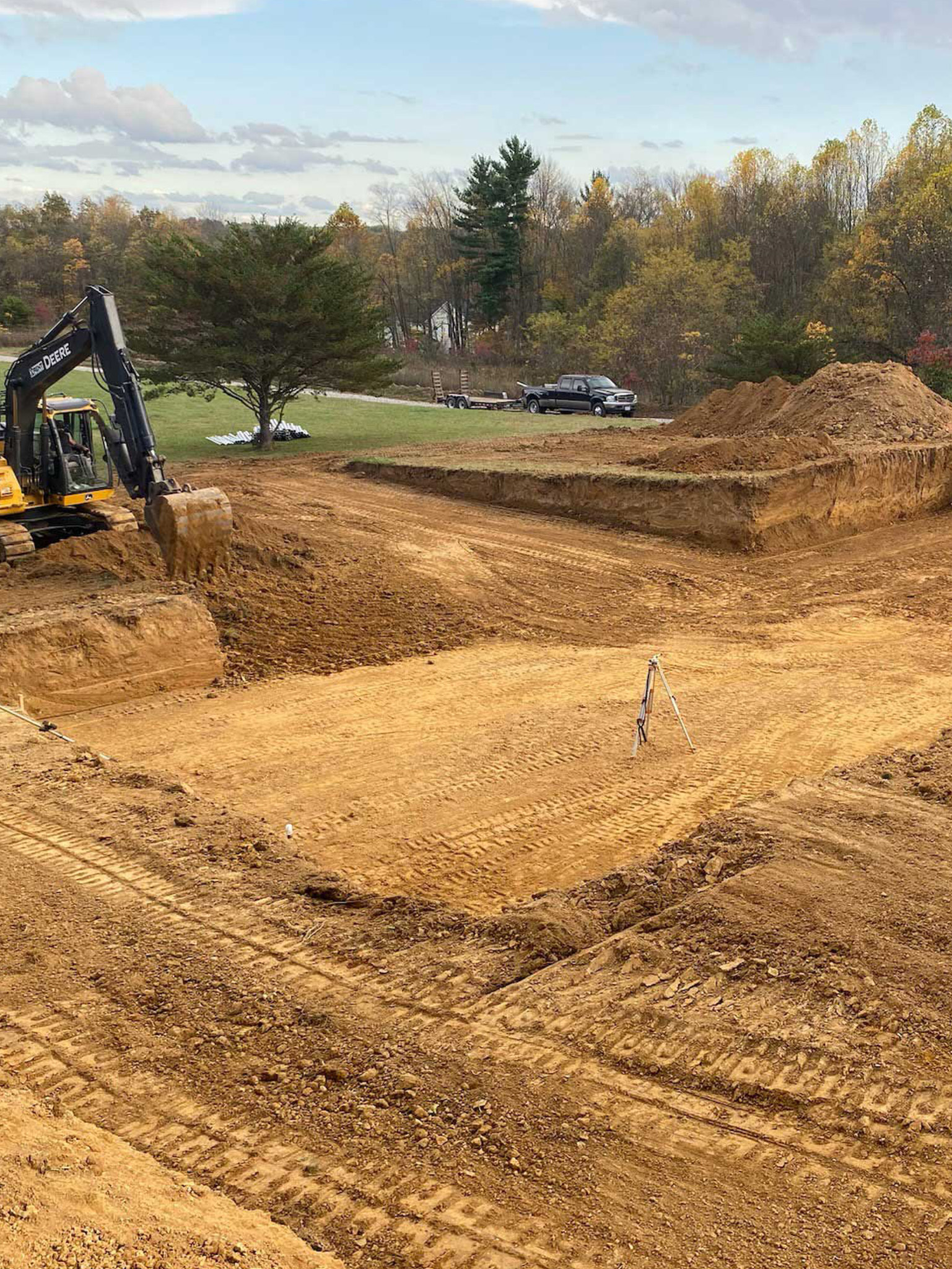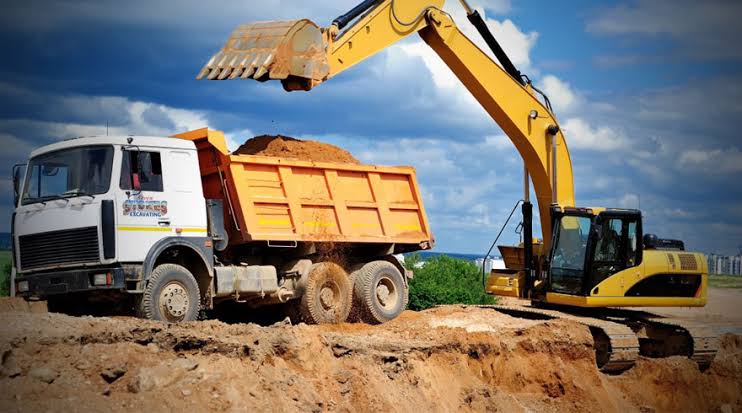Expert Septic Ohio - Trusted Septic System Specialists in Ohio
Expert Septic Ohio - Trusted Septic System Specialists in Ohio
Blog Article
Revealing the Art of Excavation: Pro Tips for Safe and Efficient Excavating
In the realm of excavation, the mastery of effective and risk-free digging is an art kind that needs adherence, expertise, and precision to well-known techniques. As dirt is turned and earth is moved, the complexities of excavation disclose themselves, demanding an eager understanding of tools, soil make-up, safety and security procedures, and environmental considerations. The know-how needed to browse these elements successfully can suggest the difference between an effective excavation job and a possible calamity. By unwinding the layers of this detailed procedure, a globe of insights and approaches waits for those seeking to boost their excavation skills to brand-new heights.
Importance of Correct Tools
To make sure the safety and performance of any kind of excavation project, using the appropriate devices is paramount. The right tools not only improve productivity yet additionally alleviate risks related to digging. Excavation projects differ in range and complexity, varying from little domestic landscaping work to massive building and construction endeavors. Despite the project size, having the correct devices can make a considerable difference in the end result.
These flexible devices come in different dimensions to match various project needs. Small excavators are excellent for smaller tasks, while bigger excavators tackle more considerable jobs effectively.
Apart from excavators, other essential devices includes dump bulldozers, trucks, and plates. Dispose vehicles are essential for removing and transferring excavated materials, while plates are made use of for digging slim and deep trenches. Bulldozers master tasks that call for pushing huge amounts of dirt or debris. By investing in the ideal tools, excavation tasks can be completed securely, on time, and with precision.
Recognizing Dirt Structure
A comprehensive understanding of dirt make-up is fundamental for performing excavation jobs with accuracy and security. Comprehending the various sorts of dirt is vital as it straight impacts excavation methods, devices choice, and general job efficiency. Soil make-up usually contains four major components: sand, silt, clay, and raw material. Each component has distinct buildings that affect exactly how dirt responds to excavation processes.
Silt particles are smaller sized than sand but bigger than clay, offering moderate drainage and communication. Organic issue, such as decomposing plant material, influences dirt fertility and security.
Prior to beginning excavation, performing soil tests to determine its composition and attributes is crucial. This details helps in selecting the proper equipment, implementing precaution, and developing excavation methods customized to the details soil problems - septic ohio. By recognizing soil composition, excavation specialists can enhance job results while making sure safety and security and adherence to best techniques
Safety Steps and Protocols
Recognizing soil make-up is the cornerstone upon which precaution and protocols for excavation projects are developed, ensuring the health of workers and the success of the endeavor. When it involves safety throughout excavation, there are several essential procedures that should be applied to reduce dangers and prevent mishaps.
Most importantly, prior to any kind of excavating begins, a detailed evaluation of the website must be performed to determine any potential risks such as below ground utilities, unpredictable dirt problems, or close-by frameworks that could posture a threat. It is critical to have a skilled person he said manage the excavation process to make certain that all security procedures are adhered to strictly.
In addition, all employees included in the excavation must be appropriately trained in secure excavating methods and the proper operation of tools. By adhering to these safety procedures and protocols, excavation tasks can be completed efficiently and without incident.
Reliable Excavation Preparation
When embarking on an excavation job, careful planning is essential to make sure performance, security, and effective end results. Efficient excavation preparation entails a number of vital steps that are important for the smooth implementation of the job.
Once the site assessment is full, the next action is to create a clear timeline and routine for the excavation tasks. This includes determining the series of jobs, devices needs, and manpower appropriation. Proper organizing assists avoid hold-ups and guarantees that the job stays on track.

Additionally, communication amongst all group members is critical throughout the preparation phase. Clear directives, routine updates, and reliable sychronisation are crucial for a successful excavation project. By spending effort and time in meticulous planning, excavation groups can dramatically boost productivity, reduce dangers, and accomplish effective results.

Managing Ecological Considerations
With boosting emphasis on ecological sustainability in building and construction techniques, taking care of ecological considerations has actually ended up being a vital facet of excavation projects. Excavation activities have the potential to influence the surrounding setting through dirt disintegration, debris drainage, environment disturbance, and contamination of water resources. To alleviate these dangers, it is important to apply finest techniques that focus on environmental management.

Moreover, find appropriate waste management is crucial to avoid dirt and water contamination. Applying procedures for the disposal of hazardous materials, recycling of waste materials, and lessening using unsafe chemicals can substantially minimize the environmental effect of excavation projects. By incorporating these techniques right into excavation planning and execution, building firms can make sure that their jobs are not just safe and productive but also ecologically liable.
Verdict
In verdict, mastering the art of excavation needs a detailed understanding of proper devices, dirt make-up, safety and security measures, and reliable preparation. By following these guidelines and considering environmental factors, excavations can be performed safely and efficiently. It is vital to prioritize safety and security and efficiency in every digging task to ensure successful results.
As soil is turned and earth is relocated, the complexities of excavation disclose themselves, demanding a keen understanding of equipment, soil make-up, security protocols, and ecological factors to consider.To make sure the safety and security and effectiveness of any type of try here excavation project, using the suitable devices is extremely important.An extensive grasp of dirt composition is basic for implementing excavation tasks with accuracy and safety. Understanding the various types of soil is critical as it directly affects excavation methods, tools choice, and overall job effectiveness. By understanding dirt make-up, excavation professionals can boost job outcomes while making certain security and adherence to best techniques.
Report this page